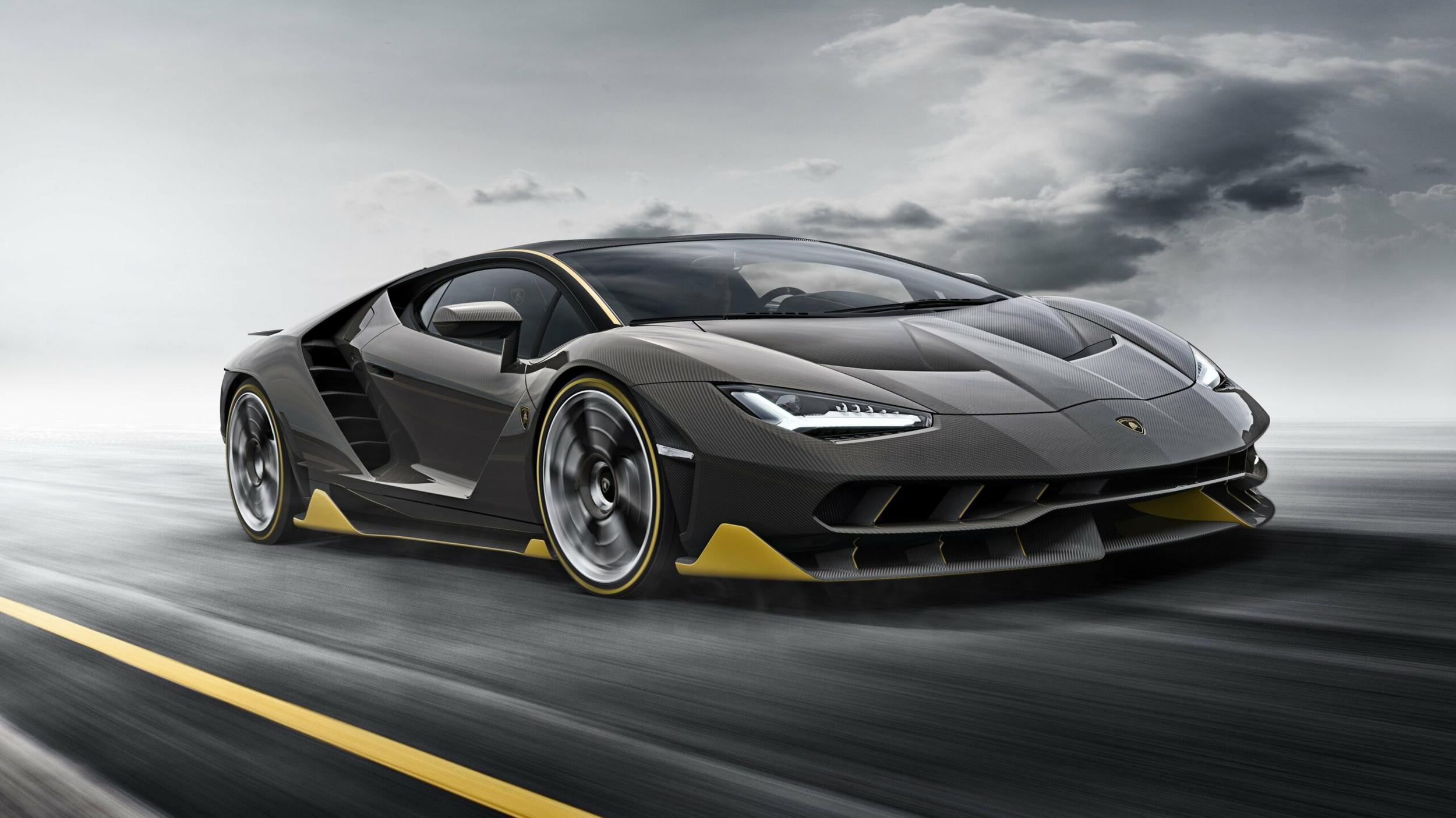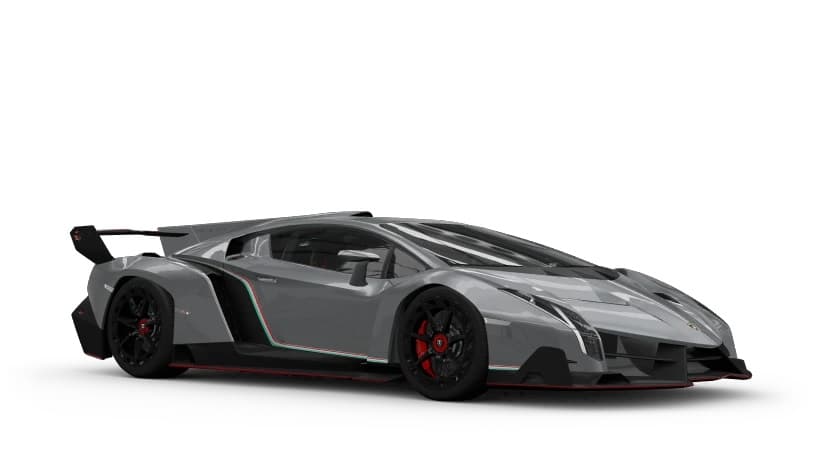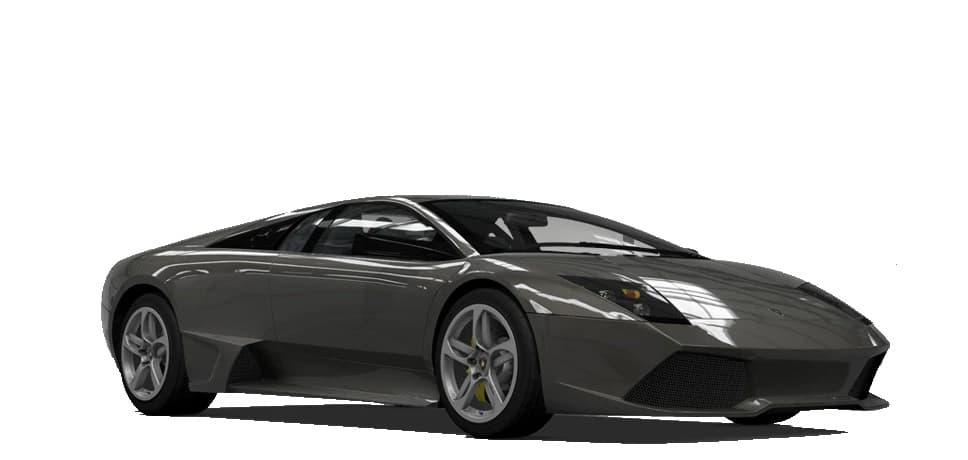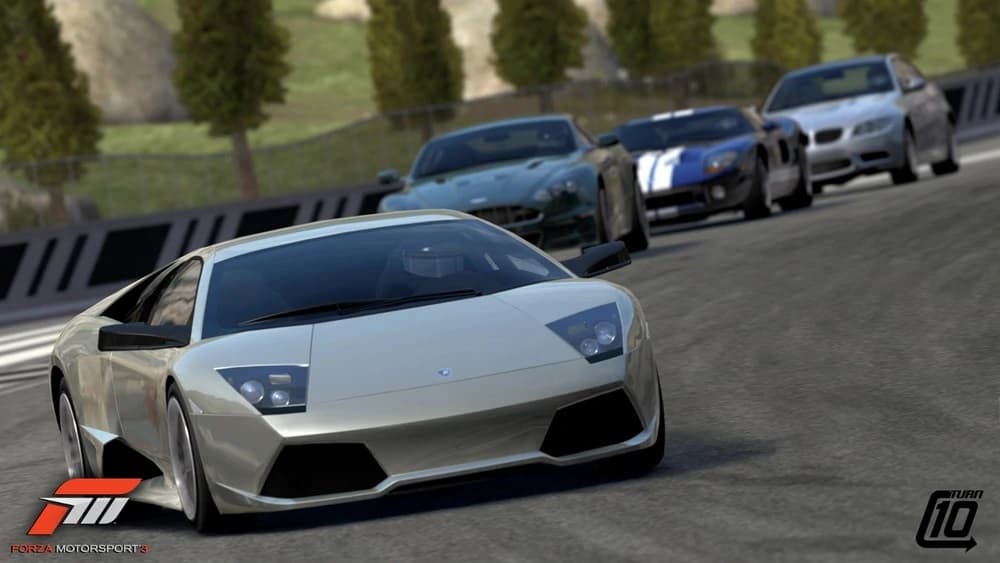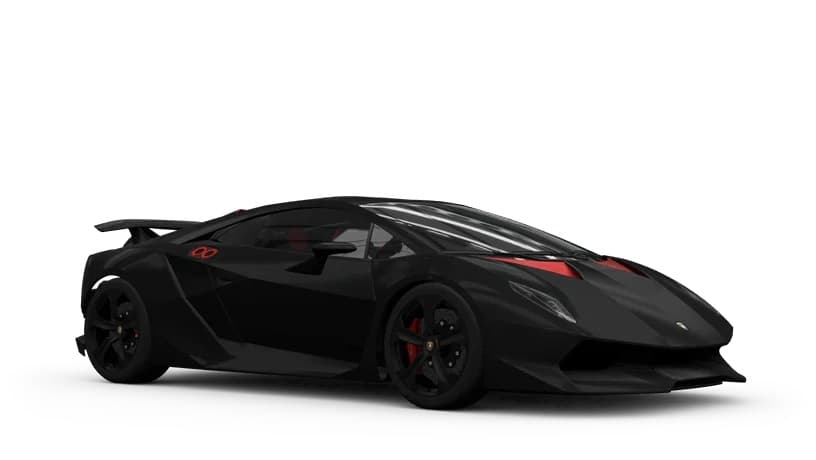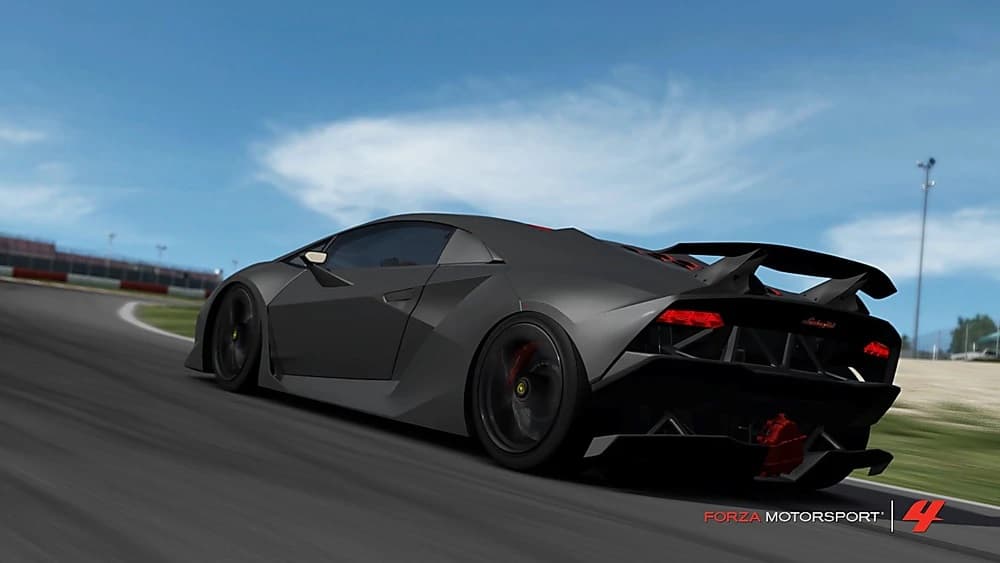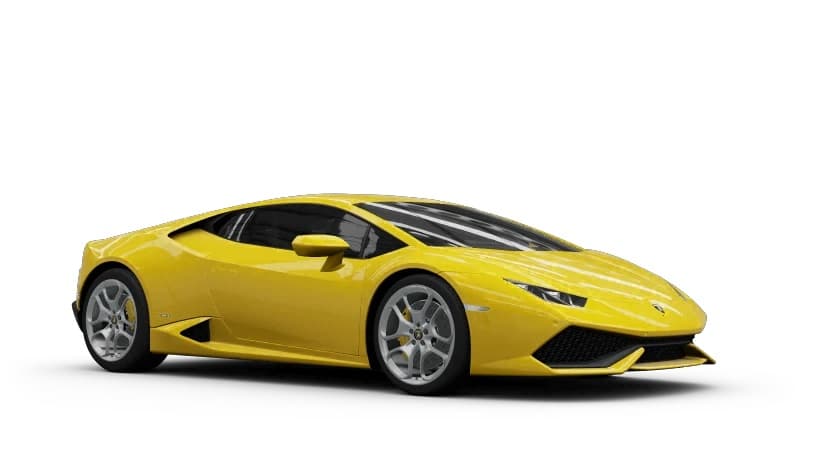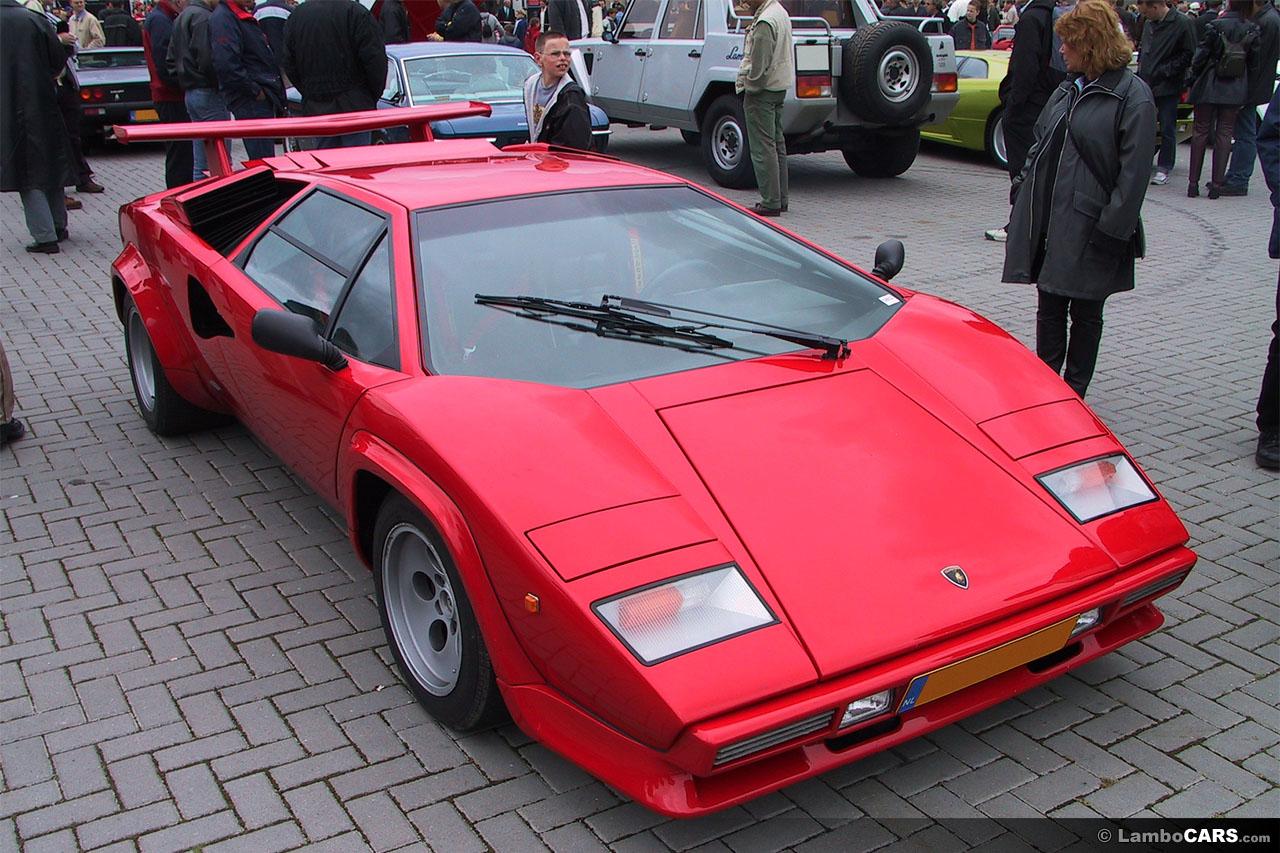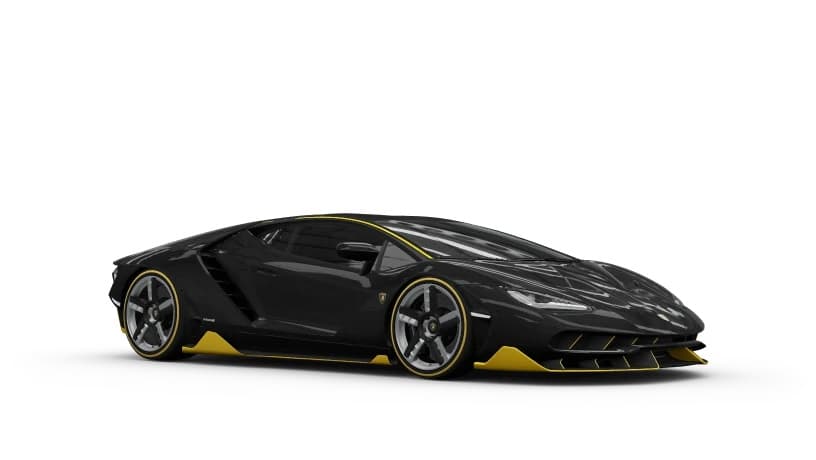Let’s be honest from the outset here: despite us all being fans of Lamborghini’s variety of present and past supercars, the closest many of us get to actually driving one is through video games.
This isn’t a bad thing at all, just the reality of the world where some of the cars you can drive in video games, like the Sesto Elemento, are so limited in real life (just 20 examples of the Sesto Elemento) that seeing one is rare, being near one is rarer, being in one is beyond most of us, and owning one would probably cost a kidney and a firstborn.
So instead of driving around needing dialysis and wondering where your firstborn is, it’s safer and more cost effective to simply fire up the Xbox or power on the PC and hop into one of the many Forza Motorsport games out there. Forza itself has a storied history, emerging in 2005 for the original Xbox console, and was one of the poster games for the still new Xbox Live online multiplayer service.
As the head of development, Kiki Wolfkill, put it, “the intention is to target Gran Turismo (for the Playstation) with this game on Xbox. [. . .] We have a lot of respect for Gran Turismo, which helps drive that desire to beat them.”
From those inauspicious beginnings, Forza has expanded to include seven main series titles with an eighth in development for the Xbox Series X and PC, and five open-world, always-online roaming games with multiple drop-in, drop-out challenges on their virtual streets. Lamborghinis have featured as some of the most important cars in each game, and it is in that light that we will look back at some of the best included across all twelve games (in no particular order).
Forza Horizon 4: 2013 Lamborghini Veneno
Without overstating the fact, the Lamborghini Veneno, one of the rarest of all real world Lamborghini cars, let alone in a video game, needed players in Forza Horizon 4 to complete a difficult seasonal championship series to unlock. That challenge is known as “Get Hyper,” and only appears in the Autumn season in the game.
That means, to even challenge the series to get the car, you’ll need to have completed about 40 to 60 hours of actual in-game time to change the seasons from the Spring, where you start, through the Supercar season of Summer, to get to Autumn.
“Get Hyper” is only open to hypercars as well, meaning you need to have enough credits in game saved up to be able to afford one to buy one of the eligible hypercars for the race series. Then, you need to win that series.
The reward was unlocking the Veneno, of which only three exist in the real world, and are the ultimate expression of what the Lamborghini Aventador is capable of in a purist race-car-for-the-road sense. To buy the car in game, you needed to pay 4.5 million credits, which is quite a lot of in-game currency.
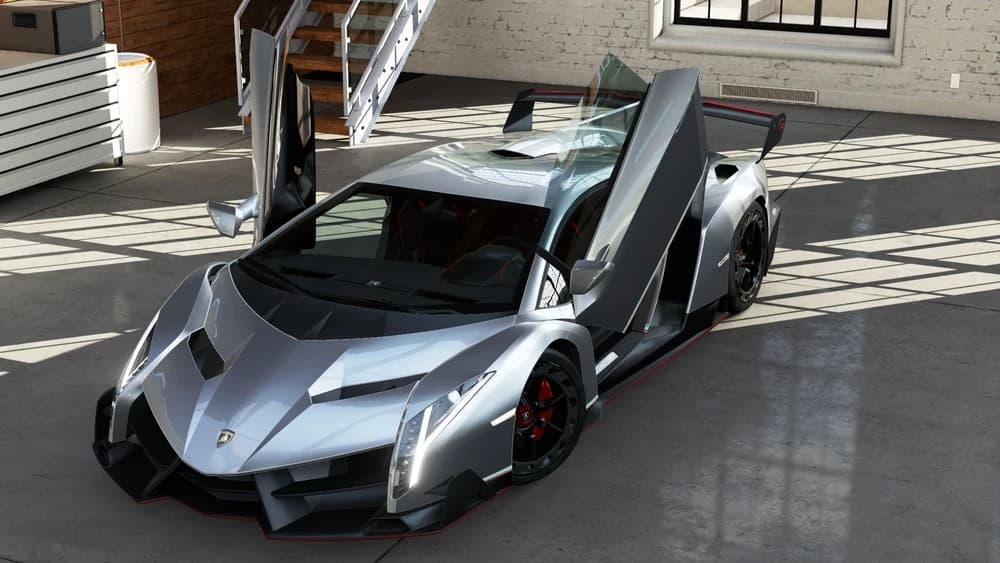
You get a screaming Italian V12 chucking out 750 HP and over 500 lbs-ft of torque through a 7-speed gearbox to all four wheels. You get a hypercar that was designed to have no compromises (as it was the 50th anniversary car for Lamborghini), and it held the record for a few years as the most expensive production car in the world at over $4 million USD.
In fact, to this day, only one other production hypercar has ever been more expensive, namely the Bugatti Chiron Super Sport 300+ at approximately $4,250,000. In the game, it was, and still is for those playing FH4, one of the most desirable hypercars, since it qualifies for every type of hypercar race series, as well as being monstrously stable and fast for open road fun. And you won’t be $4 million USD poorer for it!
Forza Motorsport 2: 2007 Lamborghini Murcielago LP640
Forza Motorsport 2 was the first game in the primary Motorsport series of games to feature Lamborghini models. The base game itself came with the Diablo GTR, the Diablo SV, the Gallardo, and the Murcielago, but it was with the March Car Pack, the last DLC for FM2 that released on March 19, 2008, that the Murcielago LP640 reared its head and became the in-game Lamborghini to have.
Holding an in-game rating of S899, and needing 229,500 in-game credits to buy, it was one of the most powerful, fastest, and best handling cars in the game. While not the absolute top of the top of the S ranked cars, it was not uncommon to see S-rank online races be populated with the LP640—nor was it uncommon to see one of those cars win the race, beating out other S-rank cars such as Koenigseggs, Maseratis, Ferraris, and Porsches.
In the real world, the Lamborghini Murcielago LP640 was the evolution of the original Murcielago 6.2. With a larger 6.5L V12, 640 HP and 487 lbs-ft of torque driving all four wheels, the LP640 became the base upon which some truly exceptional limited series cars were built from. It also became the most-sold type of Murcielago, outselling its eventual replacement, the Murcielago LP670-4 SV, as well as the original Murcielago 6.2.
The most famous of the special models built from the LP640 was the 20 unit run of the Lamborghini Reventon, which was both a special series as well as the first real test production car from Sant’Agata Bolognese to have carbon fiber used almost exclusively for construction (instead of the carbon-fiber-over-aluminum-and-steel of the Murcielago). The Reventon eventually joined the Forza Motorsports series in 2009’s Forza Motorsport 3.
Forza Motorsport 4: Lamborghini Sesto Elemento
Forza Motorsport 4 was a landmark title for many reasons. Not only was it the last of the Motorsport series to be developed for and primarily released on the Xbox 360, it also still holds the record as having the most cars included in a Motorsport game—at 665 from 80 different manufacturers, rising to 695 with the May 22, 2012 Porsche Pack.
The most prized of the Lamborghinis in the game, however, was the first inclusion of the 2011 Lamborghini Sesto Elemento in any Forza game.
In the game, the Sesto Elemento comes in as a racing class 3, or R3, level car, with a rating of R3-741. It cost 2.5 million in-game credits to buy, and much like the real car, could catch those not paying attention unaware.
In a straight line, pretty much nothing other than dedicated race cars in the R3 class could keep up, and if you were good enough to feather the brakes with the X360 controller’s left trigger, you could make it corner harder than many of those dedicated race cars. If you didn’t, however, the car could very easily spin out or understeer off the track.
In the real world, the 2011 Lamborghini Sesto Elemento was nothing more than a pure expression of speed combined with lightness. It’s the kind of car that Lotus founder Colin Chapman would have dreamed of, as his motto was “simplify, then add lightness.”
The Italians definitely took that to heart, as the car weighs 999 kilograms wet, or just over 2,200 lbs. Apart from the engine, it is made entirely out of a special carbon-plastic composite that was designed alongside Boeing. Lamborghini used it to make 20 extremely special, non-road legal, track-devouring cars, and Boeing uses it in the wings of their planes.
It also doesn’t hurt that the Sesto Elemento packs a 5.2L V10, specifically tuned to 562 HP, and almost 400 lbs-ft of torque driving all four wheels to absolutely catapult it to 60 MPH in under 2.5 seconds. It also—if you grab it by the scruff of the neck and plant the front wheels in the right direction with some trail braking—corners like it’s on rails, as there is little body weight, hence little inertial mass, to pull it off line. Much like in the game, however, if you overstep even 1%, it will try to kill you, being the razor sharp track weapon that it is.
Forza Horizon 2: 2014 Lamborghini Huracan LP610-4
When the Huracan was released to replace the Gallardo, there was a definite difference in opinion from Lamborghini fans. One side loved it, as it adopted the angular looks and poise of the Aventador in a smaller package, while the other side bemoaned that it was longer, wider, and not as pure a Lamborghini as the Gallardo was.
In the gaming world, however, the Huracan made a few waves as, after the success of Forza Horizon, Forza Horizon 2 released in September of 2014 with the 2014 Lamborghini Huracan LP610-4 as its cover car.
This denotes one of only two times that a Lamborghini has graced the box of pretty much any racing game, let alone a massive franchise like Forza. Forza Horizon 2 was also one of the first XBox One racing games, and ushered in the newest version of the XBox Live service at the same time.
As the hero car of the game, the Huracan LP610-4 was available to buy almost immediately, once you’d done a few of the multiplayer events and completed a few achievements, and cost 300,000 in game credits, which one could make in a dedicated day of playing. It holds an in-game rating of S1-896, which puts it near the top of the field in S1 races and events.
In the real world, the 2014 Lamborghini Huracan LP610-4, despite the murmurings of fans, sold very well. Those that had the money to buy one recognized the technical and design updates that had been applied, as well as the new version of the Audi/Lamborghini V10 that produced 610 HP, 413 lbs-ft of torque, and drove all four wheels.
The most noticeable technical advancement was that the Huracan was the first “affordable” Lamborghini to use carbon fiber over aluminum honeycomb as the base of its monocoque driver safety cell. This meant that, despite being physically larger than a Gallardo, it was nearly 175 kg (385 lbs) lighter, and nearly twice as strong in torsional rigidity.
This, of course, meant that special versions of the Huracan were not long in coming, such as the Huracan Performante, the Huracan STO, and the much more powerful Essenza SCV12, which uses the Huracan GT3’s racing body and chassis, modified to hold a naturally aspirated V12 monster.
Forza Horizon 3/4/5: 2016 Lamborghini Centenario LP770-4
If ever there was a hero car for the Forza Horizon series of games, it is the special car that was built and sold for the 100th birthday of the late Ferruccio Lamborghini, who was born in 1916. Named the Centenario, it combined lessons learned both from the Aventador, on which it was based, and from Lamborghini’s own Super Trofeo racing series, as well as the International GT3 Championship, where the Huracan GT3 was doing well.
In Forza Horizon 3, it was one of the two cover cars—the other being a Ford Raptor—introducing new off-road vehicles in a game that didn’t really need roads to roam about the open world. As one of the two cover cars, it was available for purchase quite early on, and unlike the Veneno, did not require a special seasonal event to unlock.
To buy it, the only achievement you needed was to have bought any super or hypercar from the in-game market with a value of over 850,000 credits. The Centenario cost 2.3 million credits, and held a rating of S2-956, placing it near the top end of S2 hypercars.
In the real world, the Centenario LP770-4 was a limited production car with only 40 units made: 20 coupes and 20 roadsters. Before the Sian FKP37, it also had the most downforce of any road-going Lamborghini, thanks in part to the multiple motorsports inspired parts. The front splitter fed two huge hood ducts that smoothed the air over the car, and the diffuser fins at the back, along with the automatically deployed and retracted wing, generated up to 500 lbs of downforce on the rear wheels alone.
Being a celebration model, it also received a special engine. The V12 from the Aventador SV was sent to the performance shop and put on a diet, as well as a training regime, resulting in a 6.5L V12 that absolutely monstered out 770 HP and 510 lbs-ft of torque, through a 7-speed transmission to all four wheels.
Where the Centenario flexed this engine is in its utterly ridiculous acceleration, dashing from 0 to 100 KPH (62 MPH) in 2.8 seconds, 0 to 200 KPH (124 MPH) in 8.6 seconds, and 0 to 300 KPH (186 MPH) in just over 23.5 seconds. It would keep going until it reached its aerodynamically limited top speed of 350 KPH, or 217 MPH.

